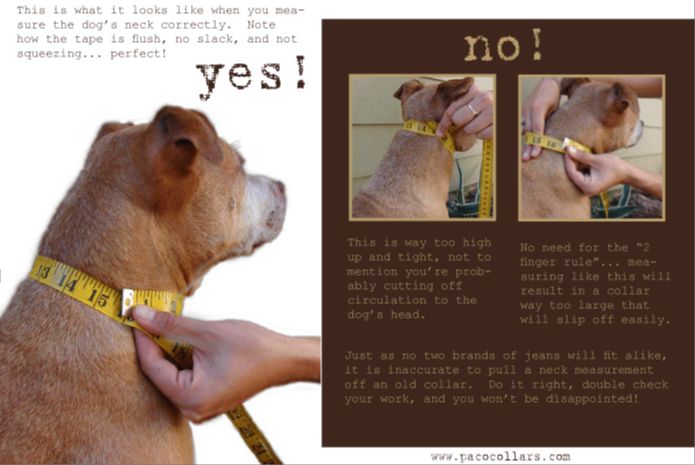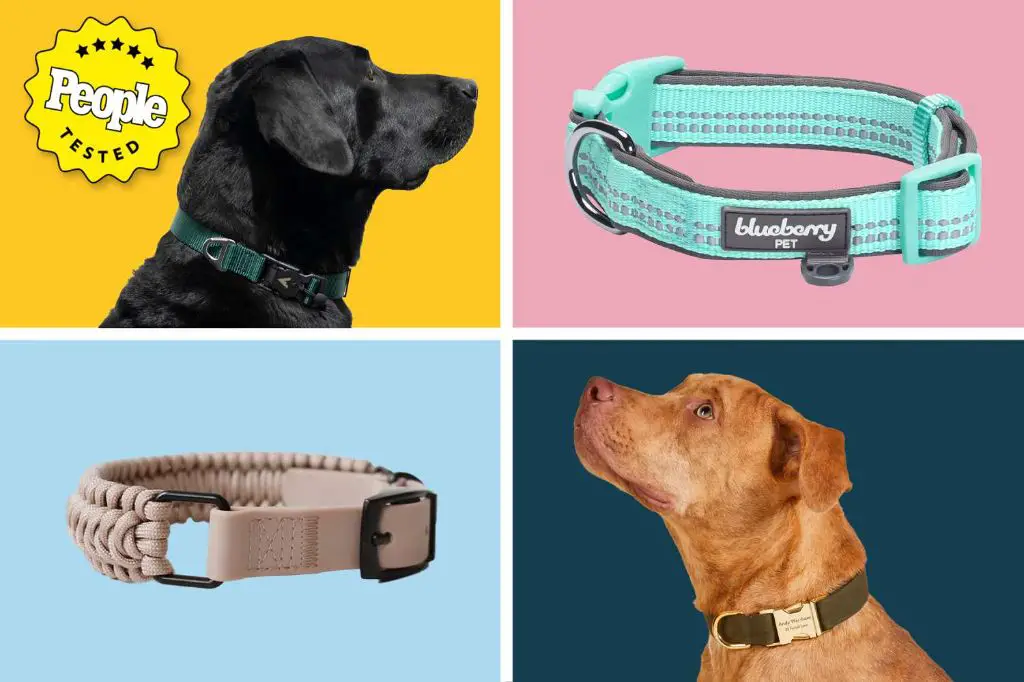Introduction
Wearing a collar is an everyday part of life for most dogs. Collars serve important purposes like holding identification tags, attaching leashes for walks, and more. But some dog owners wonder if collars may be uncomfortable or cause harm to their dog’s neck over time.
In this article, we’ll take an in-depth look at the potential pros and cons of dog collars. Key questions include:
- What is the anatomy of a dog’s neck?
- What purposes do dog collars serve?
- Can collars cause injury if ill-fitting or made from uncomfortable materials?
- What options exist beyond traditional collars?
- How can dog owners find the right balance for their pet’s needs?
By exploring these areas, dog owners can make informed choices about using dog collars in a safe, responsible manner.
Anatomy of a Dog’s Neck
A dog’s neck is made up of vertebrae, muscles, nerves, blood vessels, and skin like humans, but there are some key differences. Dogs have 7 cervical vertebrae in their neck while humans only have 5. This gives dogs a greater range of motion and flexibility in turning their heads. Dogs also have a ligament called the nuchal ligament that runs from the back of the skull to the withers to support the head and allow swinging motion. Their neck muscles are well developed to stabilize the head during movement. Major blood vessels including the jugular veins and carotid arteries run through the neck area. Dogs also have a large number of lymph nodes in the neck region to filter bacteria and assist the immune system. The skin on a dog’s neck is looser than on a human neck, which allows for more flexibility. Fatty tissue and fur provide padding and protection for muscles, vessels, and nerves in the canine neck. Overall, a dog’s neck anatomy allows for greater mobility to see and smell their surroundings.
Purpose of Dog Collars
Dog collars serve several important purposes for canine owners. The most common reasons for using a dog collar are identification, control, and fashion.
Identification tags attached to collars provide essential contact information in case a dog gets lost. License tags also must be displayed on a collar in many jurisdictions. Collars with identification ensure lost dogs have the best chance of being reunited with their owners.

Collars also provide a means of control and restraint for walking dogs safely on leashes. Properly fitted collars give owners control over their pets without causing harm. This allows for enjoyable walks without the risk of dogs running off or jumping on passersby.
Additionally, dog collars have become a fashion item. Owners often want collars in particular designs, colors, and materials to complement their dog’s personality or appearance. Fashionable collars allow owners to accessorize their pets.
Potential Issues with Collars
While collars serve an important purpose for dogs, they can potentially cause some issues if not used properly. The neck is a sensitive part of a dog’s body, so having a collar that doesn’t fit well or irritates the skin can lead to injuries or discomfort for the dog. Some potential issues that can be caused by collar use include:
Neck injuries – Too tight of a collar can put excess pressure on the trachea (windpipe) and apply force to the muscles and nerves in the neck. This can lead to strains, sprains or damage over time. Collars connected to leashes can result in forceful jerking motions that can whip the neck back and forth, potentially leading to whiplash injuries.
Hair loss – Friction from collars can cause hair loss around the neck area, especially in dogs with thick coats. This is often seen as a ring of missing fur where the collar rests.
Skin irritation – Collars that don’t fit properly can rub and chafe the neck area, leading to skin abrasions, redness, and overall irritation. Excess moisture trapped under the collar can also lead to bacterial or fungal infections.
Using the proper collar size and style based on the individual dog can help minimize the risks of these types of injuries and skin issues. Checking the neck area frequently and allowing time without a collar can also help prevent problems.
Proper Collar Fit
A properly fitted collar should not be too tight or too loose around a dog’s neck. When fitting a collar, you should be able to comfortably slip two fingers between the collar and your dog’s neck. The collar should also be loose enough to move freely down the neck an inch or two.
To find the right collar size for your dog:
- Measure around the widest part of your dog’s neck using a soft measuring tape.
- Add 1-2 inches to this measurement to get the collar size.
- Try on sample collars to find the best fit before purchasing.
- Check the fit regularly as your dog’s neck size may change over time.
A proper fitting collar should not cause choking, coughing, or discomfort when worn. It’s important to regularly check that your dog’s collar is not too tight as they grow and their neck size changes. You should be able to comfortably slip two fingers between the collar and neck. Avoid leaving collars on puppies and young dogs overnight or unsupervised.
Collar Material Considerations

Dog collars come in a variety of materials, each with their own pros and cons to consider.
Nylon – Nylon collars are lightweight, flexible, waterproof, and quick-drying. They come in a wide range of colors and patterns. However, nylon can absorb odor over time. It’s also not as durable or high-quality as leather.
Leather – Leather is durable, attractive, and ages well. It conforms to your dog’s neck over time. Leather must be maintained with conditioning to prevent cracking. It’s also heavier than nylon.
Chain – Metal chain collars provide durability and strength for large, powerful dogs. However, they can be noisy, heavy, and potentially damaging to your dog’s neck. Choke chain collars especially should not be left on an unsupervised dog.
Consider your dog’s breed, size, activities, and your personal preferences when selecting a collar material. Each has advantages and disadvantages to weigh. Pick a high-quality collar in the most appropriate material for your dog.
Collar Alternatives
You may consider exploring alternatives to a traditional collar if your dog experiences ongoing discomfort or injuries from collar use. There are a variety of options that can provide more comfort and safety for certain dogs:
Harnesses distribute pressure across the chest rather than concentrating it on the neck. Harnesses are a good option for dogs that pull on leash or have trachea, neck, or throat problems. Choose a properly fitted harness to avoid chafing.
Martingale collars are made of two loops, with one tightening when pulled to prevent escape but without applying excessive pressure. These can work for dogs with narrow heads like greyhounds. Make sure to adjust the collar properly.
Going collarless may make sense in supervised situations for dogs with serious neck or throat injuries. Remove all collars and tags when at home or in a securely fenced area.
Consult your veterinarian if you have ongoing collar issues with your dog. They can recommend the best alternatives after examining your pet and their unique needs.
Special Considerations
Some dogs, due to their age, breed, or health conditions, require extra precautions when wearing a collar. Here are a few things to keep in mind:
Puppies
Puppies have delicate necks, so it’s important not to use collars that are too heavy or put too much pressure on their throat. Opt for lightweight collars made of nylon or leather, and monitor the fit closely as your puppy grows. Adjust the collar as needed to allow room for growth.
Senior Dogs

As dogs age, their muscle tone and skin elasticity decreases. Senior dogs may be prone to neck pain or irritation from collars. Use wide, well-padded collars to help distribute pressure. Check the neck area frequently for signs of irritation. Limit collar use to walks or identification only.
Dogs with Breathing Issues
For dogs with breathing problems like collapsed trachea, collars can exacerbate respiratory distress. Use harnesses instead of collars, and opt for styles that avoid pressure on the throat. Never use choke collars or chain slip collars, as these can further restrict airways.
Dogs with Neck or Back Problems
Dogs with intervertebral disc disease, arthritis, or other neck or back issues may find collars uncomfortable or painful. Consult your veterinarian for advice. Padded harnesses are often a safer option than collars for dogs with these conditions.
Summary

To summarize, whether a dog collar hurts a dog’s neck depends on several factors. A properly fitted collar made of soft, flexible material is unlikely to cause discomfort or injury. However, collars that are too tight, made of stiffer materials, left on constantly, or used for restraint can put pressure on a dog’s neck and trachea. This may lead to coughing, gagging, bruising or damage to the larynx. Therefore, it’s important to choose an appropriate collar and size for your dog. Customize the fit to their neck anatomy, periodically check for irritation, and use collars judiciously. Consider alternatives like harnesses for susceptible dogs or those that pull on leash. Overall, collars do not inherently hurt dogs if used properly. But they require care and caution to avoid risk of neck injury.
References
American Kennel Club. (2020). How to Measure Your Dog for the Right Fit Collar. https://www.akc.org/expert-advice/health/measure-your-dog-for-the-right-fit-collar/
American Society for the Prevention of Cruelty to Animals. (2022). Collars. https://www.aspca.org/pet-care/dog-care/collars
Brown, D.C. (2022). Collar or harness: Which is best for your dog? Tufts University Cummings School of Veterinary Medicine. https://now.tufts.edu/articles/collar-or-harness-which-best-your-dog
Coren, S. (2014). Does Collaring Hurt My Dog? Psychology Today. https://www.psychologytoday.com/us/blog/canine-corner/201404/does-collaring-hurt-my-dog
Miller, P.E. (2018). The Safety of Flat Collars vs. Harnesses for Dogs. Whole Dog Journal. https://www.whole-dog-journal.com/training/collars-harnesses-and-halters-oh-my/the-safety-of-flat-collars-vs-harnesses-for-dogs/
The Harris Poll. (2015). 2015 Pet Owners Survey. https://theharrispoll.com/whether-furry-feathered-or-flippered-americas-pet-owners-spend-big-on-their-animals/